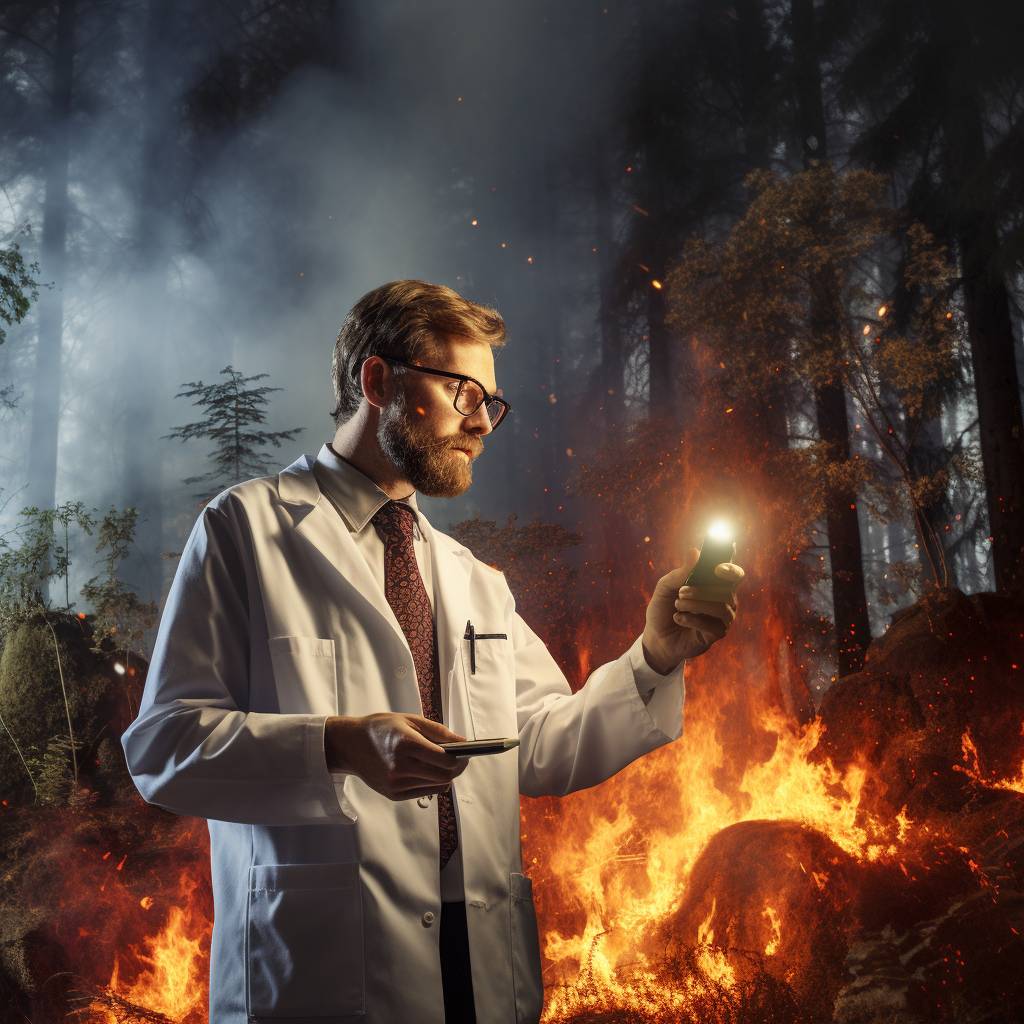In the midst of Brandenburg, the region of Germany most frequently impacted by forest fires, a groundbreaking wildfire detection system is currently being put through its paces. Juergen Mueller, a retired forestry expert and co-founder of Berlin start-up Dryad Networks, is testing a pioneering device that uses cutting-edge sensor technology to detect wildfires in their earliest stages.
The scene is set in Eberswalde forest, northeast of Berlin. Here, Mueller ignites a fire pit with pine branches, a highly combustible kindling. Within minutes, the first tendrils of smoke begin to rise, triggering the innovative green and black device. Powered by solar energy, it is designed to detect the gases released in the initial, smouldering phase of a fire. The device, which was developed two years ago by Dryad Networks, features ultra-sensitive gas sensors created by Bosch, a leading German engineering firm.
These sensors function as an “electronic nose,” as Mueller puts it. Not only do they detect gases, but they also monitor temperature, humidity, and air pressure. They can be attached to trees and are able to identify an emerging fire within 10 to 15 minutes – a significant improvement on traditional surveillance systems.
The device’s capabilities are further enhanced by artificial intelligence, which enables it to differentiate between the early stages of a wildfire and other sources of gas emissions, such as exhaust fumes from a diesel truck. At his lab in Eberswalde, Mueller has also trained the device to distinguish between different types of wildfires by exposing it to smoke from various wood shavings. This enables the sensor to recognise the unique “smell” of smoke from different types of forests, such as pine or beech.
Once a fire is detected, the data is transferred to a cloud-based monitoring system, and fire authorities are immediately notified. Approximately 400 sensors have been installed throughout Eberswalde forest – one per hectare (or 2.5 acres) – as part of a pilot project with the local municipality to assess the reliability of this early-warning system.
Dryad Networks reported that ten countries, including the United States, Greece, and Spain, are already experimenting with the device. The company sold around 10,000 devices last year and aims to have 120 million installed worldwide by 2030.
Raimund Engel, Brandenburg’s forest fire protection officer, views these sensors as a valuable supplement to the current visual detection method used in the state. At present, 105 towers equipped with 360-degree rotating cameras scan the surrounding landscape for signs of fire. Engel monitors these images at the forest fire centre in Wuensdorf, south of Berlin, ready to raise the alarm at the first sign of danger.
With 521 forest fires reported in 2022 alone, Brandenburg is Germany’s most fire-prone region. According to Engel, the weather conditions in this forest-rich area are becoming increasingly similar to those in some Mediterranean regions due to climate change. This includes periods of drought and temperatures that can reach up to 40 degrees Celsius (104 degrees Fahrenheit).
Engel emphasises that quick detection is crucial in preventing wildfires from spiralling out of control. “The faster we detect the fire, the quicker firefighters can be on the scene,” he said. In this context, Dryad Networks’ innovative use of electronics could prove invaluable in protecting forests worldwide from the devastating impacts of wildfires.
